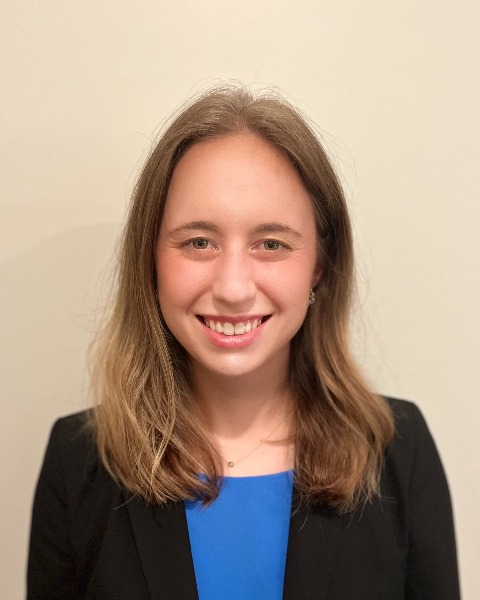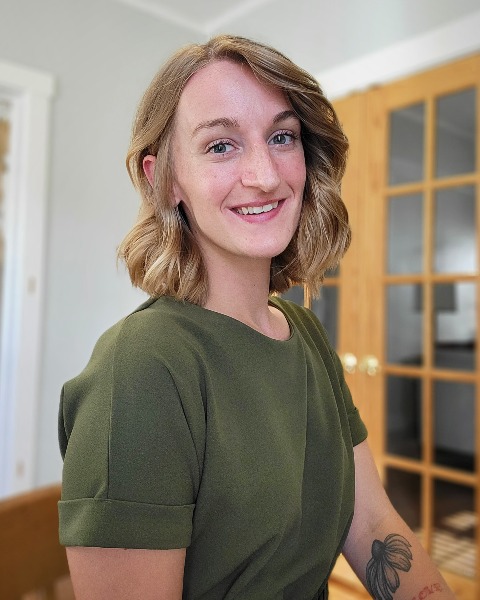Research (R)
Pediatrics (P)
Amplification and Assistive Devices (AAD)
RP402 - Development of a Clinical Speech Recognition Task for Children with Mild Bilateral Hearing Loss

Melissa R. Henry, AuD
Research Audiologist
Boys Town National Research Hospital
Omaha, NebraskaDisclosure(s): No financial or nonfinancial relationships to disclose.
.jpg)
Ryan McCreery, PhD
Vice President of Research
Boys Town National Research Hospital
Omaha, NebraskaDisclosure(s): Boys Town National Research Hospital: Employment (Ongoing); NIH/NIDCD: Grant/Research Support (Ongoing)
.jpg)
Dawna Lewis, PhD
Research Scientist
Boys Town National Research Hospital
Omaha, NebraskaDisclosure(s): Phonak: Consultant/Advisory Board (Ongoing)
- EW
Elizabeth Walker, PhD
Associate Professor
University of Iowa
Iowa City, IowaDisclosure(s): No financial or nonfinancial relationships to disclose.

Maggie Smith
Research Assistant II
Boys Town National Research Hospital
Omaha, NebraskaDisclosure(s): Boys Town National Research Hospital: Employment (Ongoing)
Lead Presenter(s)
Contributor(s)
Clinical speech recognition tests often fail to differentiate children with mild bilateral hearing loss (MBHL) from children with normal hearing (NH). We developed speech recognition tasks that reflect real-world listening to identify difficulties in children with MBHL.
Methods: Children completed four masked sentence recognition conditions unaided. Children with MBHL who wore hearing aids completed the tasks aided.
Results: Children with MBHL had poorer speech recognition than children with NH. Scores improved with hearing aids.
Conclusions: These speech recognition tasks offer audiologists sensitive tests to assess listening challenges of children with MBHL and provide evidence for consistent and timely intervention.
Summary::
Rationale:
Despite improvements in early hearing loss detection, children with mild bilateral hearing loss (MBHL), defined as a better-ear pure tone average >15 dB HL (Hearing Level) and < 50 dB HL, continue to experience considerable delay in the provision of amplification and early intervention (Fitzpatrick et al. 2014; Walker et al. 2017). Variability in outcomes for children with MBHL has resulted in uncertainty among professionals, leading to a “failure-based” approach to providing hearing aids and other interventions (Winiger et al. 2016), where intervention is often delayed until deficits in spoken language development are apparent. Additionally, current clinical speech recognition tests in quiet or background noise often fail to differentiate children with MBHL from children with normal hearing (Blamey et al. 2001; Walker et al. 2015; McCreery et al. 2015). There is a discrepancy between high speech recognition scores compared to parent-reported difficulties by children with MBHL in everyday listening situations (Winiger et al. 2016). Lack of evidence-based clinical tools to assess the listening needs of children with MBHL may result in uncertainty about the benefits of hearing aids for this vulnerable group of children with hearing loss. The Finding Appropriate Solutions to Treat Reduced Audibility in Kids (FASTRAK) study sought to identify children with MBHL who may benefit from amplification by developing clinical speech recognition tools to reflect real-world listening situations. Adaptations to the research test battery allowed clinical implementation in six pediatric audiology clinics. Initial laboratory validation data will be presented.
Design
Two groups of children (n = 76; ages 4-12 years old) were recruited, one group with normal hearing (NH; no audiometric thresholds ≥ 20 dB HL in either ear) and one group with MBHL (better-ear pure-tone average > 15 dB HL and ≤ 50 dB HL). Children completed four masked sentence recognition conditions unaided in the sound field at 60 dB SPL, three where the target was co-located with the masker at 0 degrees: 1) speech-shaped noise masker, 2) two-talker masker, 3) two-talker masker with reverberation, and one where the target was spatially separated from the masker: two-talker with the target at 0 degrees and masker at 90 degrees. Children with MBHL who used hearing aids also completed the same four masked sentence recognition conditions with their hearing aids.
The analysis demonstrated a significant interaction between the hearing group (NH, MBHL unaided, and MBHL aided) and condition. Children with MBHL had the poorest scores unaided and showed aided benefit across all listening conditions. Even in the aided condition, children with MBHL did not reach equivalent levels of performance to children with NH, but the group differences varied across conditions.
This study evaluated speech recognition tools intended to improve audiological assessment of children with MBHL. The methods used in this study will provide clinical audiologists with better tools designed to assess the unique listening challenges of children with MBHL and help provide evidence for more consistent and timely intervention for this currently under-served subgroup of children with hearing loss.
Learning Objectives:
- Describe how informational masking affects clinical assessment of children with typical hearing and children with mild bilateral hearing loss.
- Implement clinical speech recognition protocols that utilize two-talker speech maskers and spatial release from masking to assess hearing aid candidacy and benefit.
- Evaluate how degree of hearing loss and hearing aid fitting quality affects speech recognition for children with mild bilateral hearing loss.
